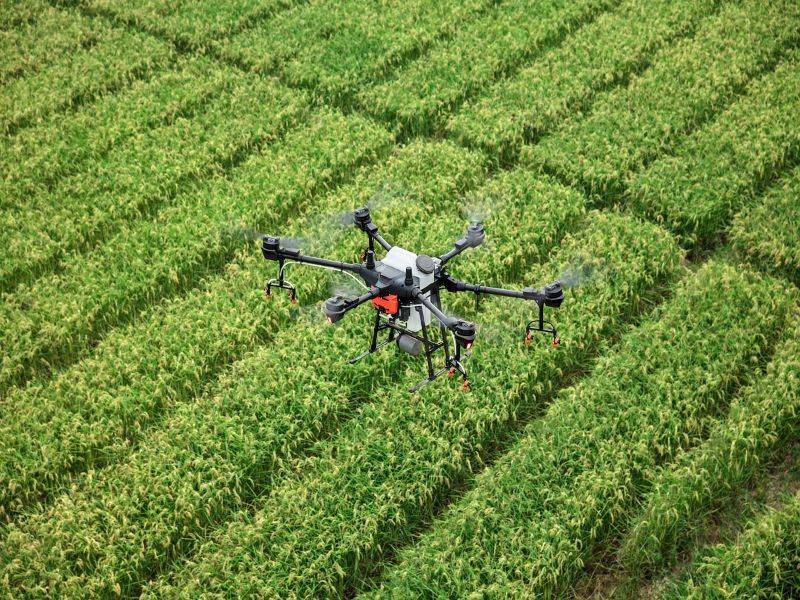
India, which is primarily dependent on agriculture, has yet to tap into its real potential because of improper methods of monitoring crops, irrigation patterns and pesticide usage. The introduction of Drones in the agricultural sector is sure to be a game changer. Farmers will be able to monitor the crop health, irrigation patterns required, water stress in the plants, soil condition, and other factors that can be accurately studied and prevention or execution of proper methods can be implemented.
Even though agri-drones have not quite arrived in India yet, certainly not on the scale needed, the technology has already started showing an impact. A case in point comes from Maharashtra where sugarcane farmer Babusaheb Tawde’s crop was struck by wilt disease and was diagnosed and saved from being destroyed by agri-drones that captured data with NDVI (Normalised Difference Vegetation Index) and RGB sensors.
A major thrust for agri-drones in India is also the rising demand for quality food.Furthermore, advancements and adoption of technologies in agriculture and growing farmers’ interest in drones is channelizing venture funding. The government is working to promote the manufacture of drones in the country and set up task forces for designing and production. The biggest challenge impeding the use remains an acute shortage of skilled manpower to fly, use and maintain the machines.
From mapping and surveying to crop dusting and spraying, here’s a look at some agri-drone technologies already being used on farms, and some new ones being explored.
- Monitoring Plant Health
Drone imagery has already been introduced with great success for monitoring plant health. Drones equipped with special imaging equipment called Normalized Difference Vegetation Index (NDVI) use detailed colour imagery and information to indicate plant health. This allows farmers to monitor crops as they grow and tackle any problems at the earliest.
- Monitoring Field Conditions
Drone field monitoring is also being used to monitor the health of soil and field conditions. These provide accurate field mapping including elevation information that allow growers to find any irregularities in the field. Having this information can be useful in determining drainage patterns and wet/dry spots which allow for more efficient watering techniques. Nitrogen level monitoring in soil using enhanced sensors is also being explores. It allows for precise application of fertilizers, eliminating poor growing spots and improving soil health.
- Planting & Seeding
One of the more recent uses of drones in agriculture is for planting seeds. Automated drone seeders are now being used in forestry industries, but the real potential still remains untapped in crop farming. Hard to reach areas can be replanted using this technology, and future possibilities are being continuously being explored.
- Spray Application
Drone sprayers are able to navigate hard to reach areas, such as steep fields at high elevations. These sprayers are designed to deliver fine spray applications, and thus target specific areas to maximize efficiency and save on product costs. Drone use to apply spray treatments is already widespread in some countries. However, only a handful of countries permit the use of drones for this task.
- Security
Drone security has proven to be extremely useful to farm management. Using drones to monitor the far reaches of a farm without having to be physically present saves time and allows for frequent monitoring. Drone cameras can provide an overview of farm operations throughout the day to ensure operations are running smoothly.
The future looks promising
Drones have already vastly altered the agricultural industry and will continue to grow in the coming years. According to reports, the agricultural drone market is expected to grow from a $1.2 billion (USD) industry in 2019 to $4.8 billion in 2024. From scouting to security, drone use will become more ubiquitous on large and small scale farms in the next few years to come.
Source: Indian Academy of Drones










